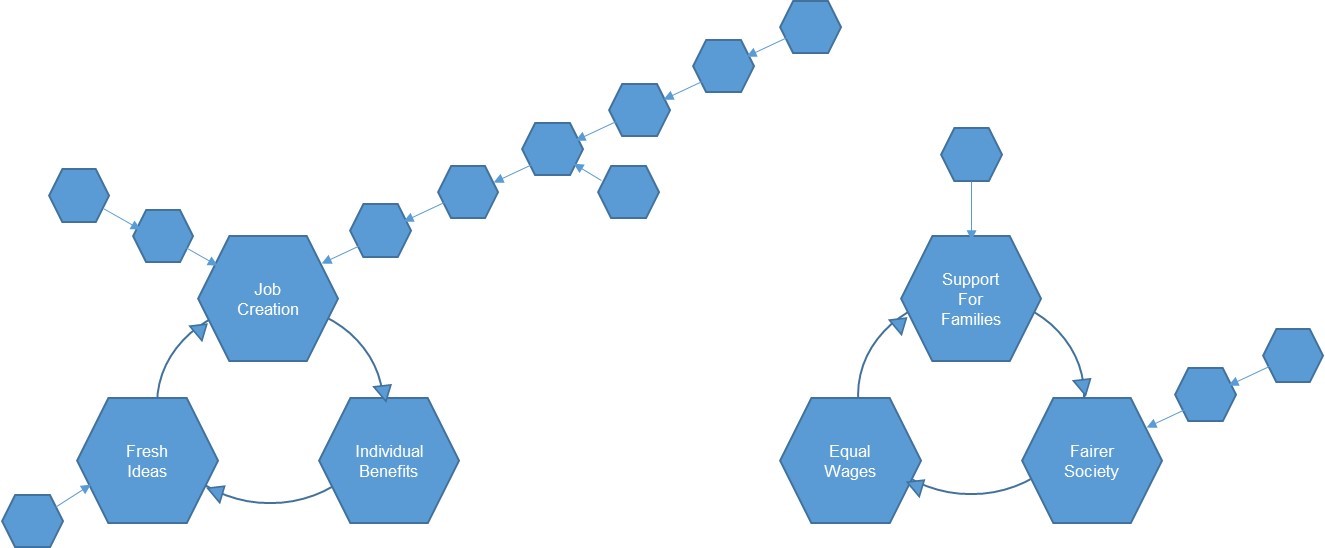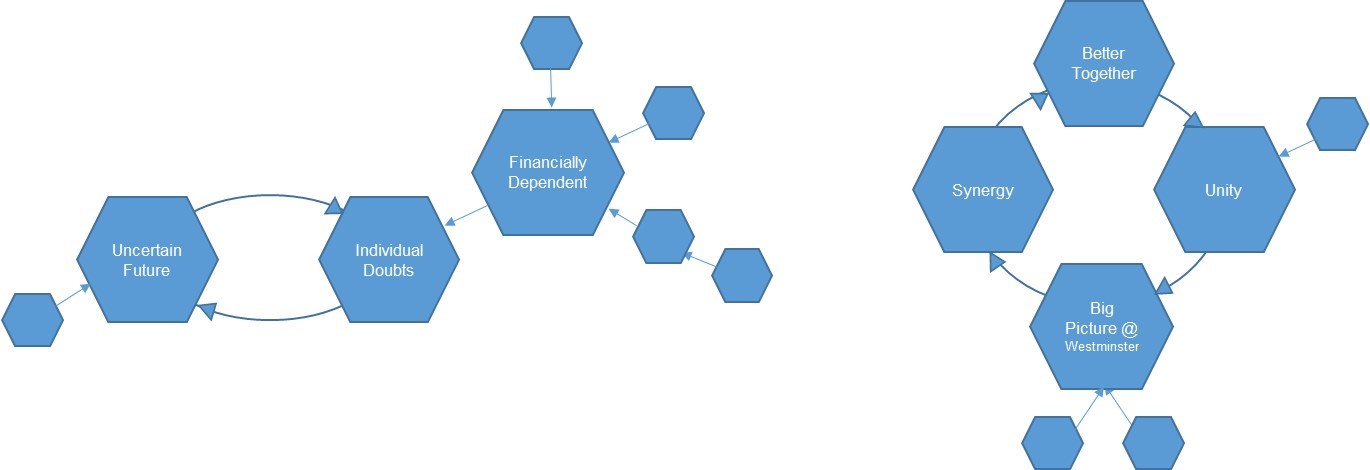The smartest move any English person can make this week would most likely involve staying as far away from discussing or expressing opinions about the Scotland independence referendum as possible. On the other hand, the ongoing debate represents a somewhat unique opportunity to examine and analyse two opposing sets of perspectives to see what they might reveal.
Why, for example, is such a large percentage of the voters still apparently undecided three days before the referendum?
Is there a way to get beneath the noise of the ‘yes’ and ‘no’ campaigns to see what the core issues are?
And, if there are ‘core issues’, what might the politicians best say during these last days of electioneering to get the undecided to land their vote on their side of the debate? Or rather, what should the impartial onlooker be listening out for in the next three days?
In any kind of complex situation like the one in Scotland right now, we tend to use our Perception Mapping process to try and make sense of the things that a group of people are saying about a situation. This time around, however, we can draw up a pair of Maps – one attempting to make sense of the Yes campaign and one making sense of the No.
In the Yes campaign, a scrape of the various media commenting on the debate revealed 19 main reasons why Scots should vote ‘Yes’ to independence. Having compiled this list we conducted our usual ‘leads to’ analysis to try and make sense of the relationships between each of the reasons in order to establish what the main issues were. Here’s what the resulting Perception Map looked like:
 If anyone is interested in looking at the full analysis, we’ll be featuring it in the September issue of the Systematic Innovation ezine to be published after the dust has settled on the Referendum. For now, fosucing on the key points of the Map, the Yes campaign pretty much distills down to two core issues:
If anyone is interested in looking at the full analysis, we’ll be featuring it in the September issue of the Systematic Innovation ezine to be published after the dust has settled on the Referendum. For now, fosucing on the key points of the Map, the Yes campaign pretty much distills down to two core issues:
- A hope that independence will create a virtuous cycle of fairer society, better wage equality and increased importance of the family.
- A hope that independence will create a virtuous cycle of job creation, leading to greater individual benefits, fresh ideas and hence even more job creation‘Yes’ advocates would do well to talk convince voters about the validity of these two assumptions. Conversely, ‘No’ advocates would do well to try and show that they are not valid assumptions. Impartial outsiders, might like to watch for evidence of either thing happening in the coming days. If the race is as close as current polls are suggesting, the right words in either of these two directions might just be sufficient to sway the result.
So, what about the No campaign? An equivalent search for reasons to say No was performed across the media, this time revealing a slightly shorter list of perceptions. Here’s what the final Perception Map looks like when we map the relationship between them:
Again we end up with two core independent issues:
- A downward spiral concerning doubts about the future being expressed both individually and collectively, and driven by the fact that Scotland is currently financially dependent on the UK
- A hope that by being part of the Union Scotland opens up the opportunity for greater cross-border unity and synergies coming from the Government in Westminster and their ability to look at the UK from a big picture ‘whole’ perspective.
‘No’ advocates would thus do well to play up the negative uncertainty issue and the positive synergy opportunity. And, conversely again, the ‘Yes’ campaign should be looking to allay the doubt concern and offer up arguments against the synergy opportunity. Impartial outsiders might like to keep a look-out for signs of either set of arguments to again see how the ‘undecided’ might be influenced.
So much for analyzing what people are saying. Perhaps the bigger issue at this point is whether there really are over half a million Scots that haven’t made their minds up yet. This is obviously a much more difficult question to answer, but as such makes it a perfect challenge for our PanSensic toolkit to try and sort out. Here’s another topic requiring a more detailed discussion than is appropriate here. That said, we’ve done a lot of scrapes of what Scots are saying about the Referendum in the past couple of weeks to get a flavor of what’s going on ‘between the lines’. Here are the results of a pair of the PanSensic tools that we’ve used to analyse what’s being said on the ‘Yes’ and ‘No’ sides of the debate:
We’ll leave those familiar with PanSensics to try and summarise what this picture is trying to tell us. From my perspective, I think the story they’re trying to tell us is that the polls are likely to be quite significantly in error. And that the ‘No’s will have it by a big enough margin for the pollsters to be concerned about the validity of their techniques. Whether that will result in a surge in interest in PanSensics is rather more difficult to predict <grin>.



